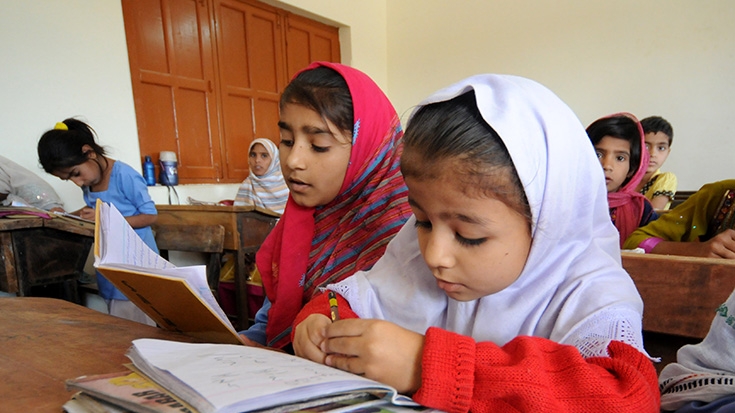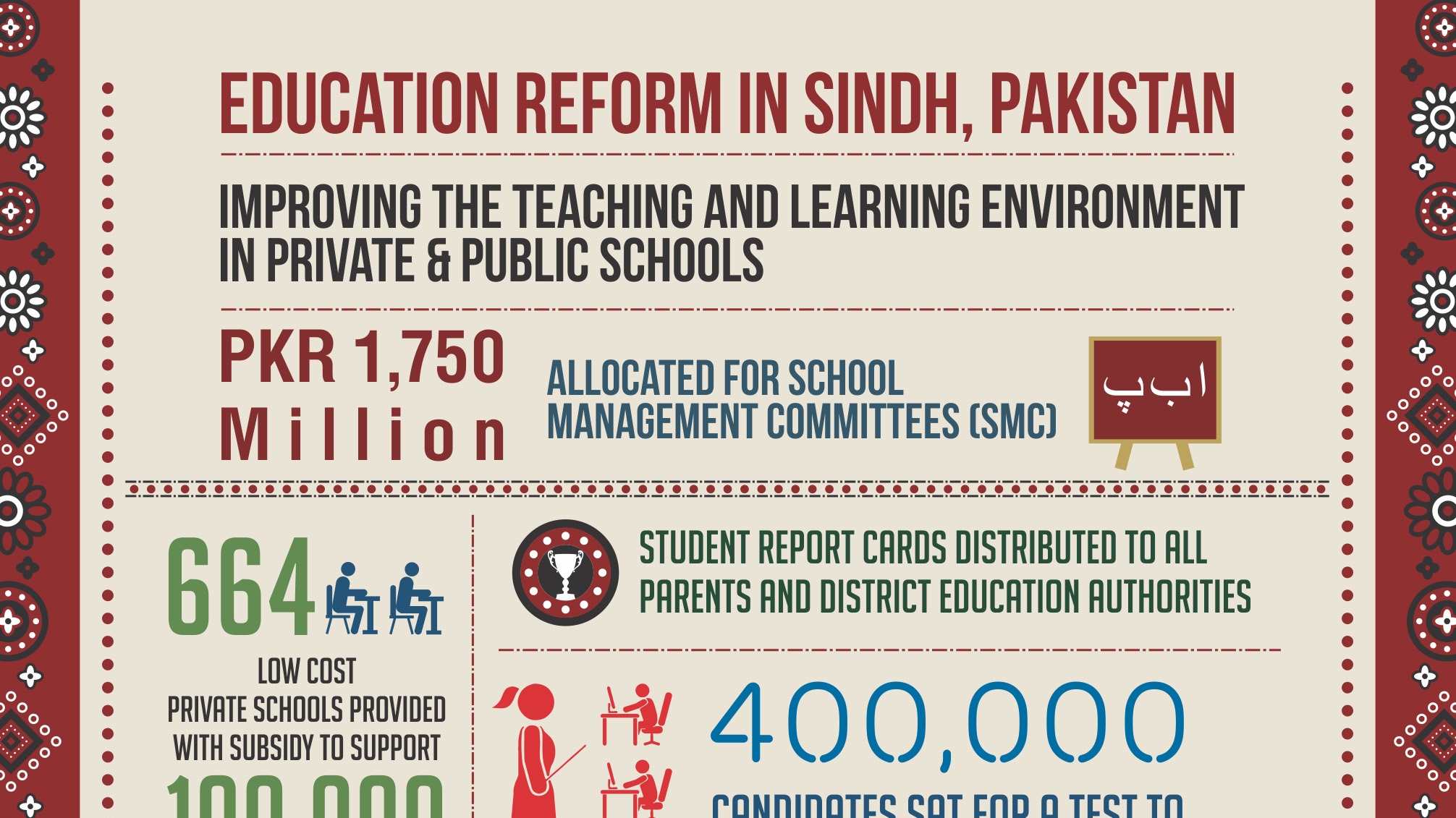Solution
SERP II supports selected governance, accountability, and system improvement activities in order to help the Sindh Government improve access and quality of service delivery. Significant activities under SERP II include a need and merit based teacher recruitment, induction training for the newly recruited teachers, improvements in data collection and verification, school management committee grants and school specific budgets to manage minor needs at the school level, student achievement tests for Grade 5 and 8 students, improvements in the education management cadre and consolidation of schools in the same vicinity to improve school management.
The project’s innovative, results-based design, specifically the use of Disbursement Linked Indicators (DLIs) and covenants, has aided the provincial government in focusing on and satisfactorily achieving the majority of agreed implementation progress and performance targets.
Results
SERP II, which is focused on strengthening institutional capacity and governance in the sector, has helped to support improvements at the school level since its approval in 2013. Some key results of the program are:
16,800 teachers were recruited through a test, merit and need based recruitment process, and have been provided a two week induction training, 800 master trainers and supervisory staff were also trained during this process to provide training and supervisory support.
Out of a total of 40,356 schools, 22,471 School Management Committees (SMCs) have been verified and PKR 678 Million (USD 6.78 million) disbursed to the committees for school based repairs and learning needs. The government has allocated a total of PKR 1750 Million (USD 17.5 Million) for the fiscal year 2014/15 which will be disbursed to the remaining SMCs after verification of their status. Each SMC is provided with an annual flat grant of PKR 22,000 (US$231) for primary schools, PKR 50,000 (US$526) for middle and elementary schools, and PKR 100,000 (US$1,052) for high and higher secondary schools.
As of December 2012, 1216 government schools have been consolidated in 14 districts of the province, the government is now working with the school management to ensure the schools have the necessary resources and teaching staff.
A student achievement test for the year 2013-14 was conducted in all schools across Sindh in Grade 5 and 8, as many as 223,075 students appeared in the test. The results are expected to play an important role in planning for teacher management.
The government is also supporting 664 low-cost private schools with subsidies in rural parts of the province following a third party verification to confirm the unavailability of any type of school in the vicinity. The subsidies from the government ensure that the schools are able to provide free education and textbooks to the children. The schools support approximately 100,000 students, who would otherwise have been out of school due to absence of any type of school in the area.
Bank Group Contribution
The World Bank provides financial and technical support to Sindh’s Education Sector Reform Program through a USD 400 million credit from the International Development Association (IDA), with disbursements linked to fulfillment of agreed performance indicators. A US$7 million technical assistance component has been included in the project that finances the project’s essential capacity-building needs.
Partners
The World Bank works closely with Development Partners supporting education development in Sindh, the main counterparts are the European Union, the Global Partnership for Education, United Nations Children’s Fund, and the United States Agency for International Development.



